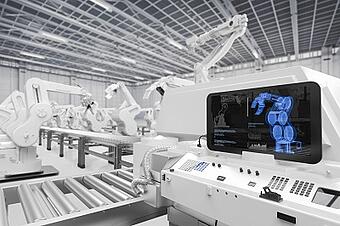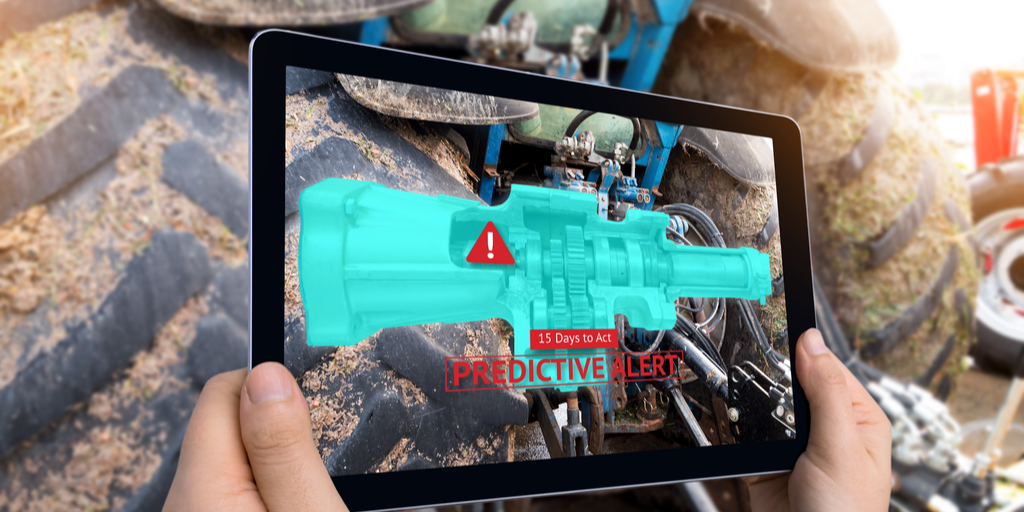Have you ever had somebody tell you, “If it ain’t broke, don’t fix it”? That mentality underlies an early approach to factory maintenance. Keep production lines running at maximum capacity until something breaks. Then, fix it.
Fast forward: two decades into the 21st century, some factory managers still suffer from equipment failure anxiety. With the conventional approach, all they can do is wait for the alarm to go off, then rush to locate and isolate problems, conduct on and offline diagnoses, and to the best of their ability, try to apply existing solutions hoping to resolve the issues before too long.
In fact, the unexpected failure of critical equipment is increasingly avoidable. Today, a manufacturer can equip their facility with state-of-the-art machinery that comes pre-loaded with an impressive array of sensors and built-in local computing power. Factories can enable constant monitoring of equipment or assembly lines based on the recent technological developments, including real-time data acquisition and communication, analysis carried out both locally (near sensors) and remotely (control room or cloud), as well as anomaly detection and rapid response.
We are already living in the age of predictive maintenance. So why allow an unexpected production line fault to trigger a nightmare about catastrophic failure impacting potential revenues?
IIOT and Industry 4.0
Trailblazers in the manufacturing segment are well aware of the expectations surrounding the fourth industrial revolution, or Industry 4.0. Based on the 2015 report from the World Economic Forum on IIoT, also described as “Industrial Internet”, executives from multiple industries who contributed to the publication all envisioned that IIoT “will dramatically alter” a series of industries corresponding to 2/3 of the global GDP.
The role of the IIoT in enabling predictive maintenance was a key takeaway from that WEF report. In 2020, we already have many of the supporting technologies to assist with process automation as well as efficiency and more functionality. Factory managers are no strangers to the concept of predictive maintenance, originally a mainframe computer-intensive approach that aroused the interest of NASA as early as 1972.
Often, however, significant capital investments are associated with existing assets that are decades short of full depreciation. These legacy production lines are in many cases automated and capable of delivering high-quality parts and products. However, they fall well short of the promise of fully implemented IIoT.
Predictive Maintenance for Hard-to-Access Legacy Assets
For many decades and all over the planet, veteran engineers and technicians combined available technology for diagnostic procedures with their senses of sight, sound, smell, and touch as they watched equipment function, checked for hotspots, listened for unusual sounds and sensed telltale vibrations. They checked fluids visually and by noting their smell, sometimes carrying samples back to a central lab for testing.
These inspections were often successful in preventing downtime due to unexpected equipment failure. Today, however, it is possible to implement continuous monitoring of legacy equipment by retrofitting with suitable combinations of sensors tracking a wide range of parameters and co-located intelligent devices capable of processing the data even before it is fed into the local network – the factory’s IIoT.
A persistent and ubiquitous challenge is the combined size of certain manufacturing facilities and the difficult-to-reach locations for ideal placement of sensors. Battery power is often mandatory for these small devices, with the lifetime of the batteries limiting the practicality of many implementations: frequent replacement is not viable.
A solution is inherent in the availability of inexpensive technology harnessing low-power machine learning (TinyML) to simulate the apparently intuitive approach employed by veteran engineers and technicians.
Manufacturing plants often work with specialized companies that facilitate and design IIoT upgrades. If the factory owners are fortunate, their IIoT experts will be aware of the ultra-low power requirements, cost, and size of solutions incorporating Ambiq’s sub-threshold power-optimized technology (SPOT). Companies such as Shoreline IoT have already incorporated Ambiq’s remarkable Apollo line of MCUs and SoCs into sensors used for establishing IIoT features in a factory.
How Ambiq Is Helping
Ambiq’s proprietary technology allows chip components to operate at substantially lower voltages than the standard, which translates into mW-level power budgets consistent with prolonged battery life. The Apollo family of chips incorporates a powerful array of hardware components that allows designers and programmers to deploy cutting edge inference and decision-making functions at a remarkably low cost in both dollars and watts. The result, as has already been demonstrated in various products incorporating Apollo processors, is a series of devices displaying Artificial Intelligence of Things (AIoT) with battery lifetimes measured in weeks, months, or even years.
Nightmares about unexpected production line downtime due to equipment failure should become a footnote in discussions about the history of manufacturing. Join the ranks of designers incorporating Ambiq technology into battery-powered, sensor-based edge devices in IIoT manufacturing settings. Please visit our product website or contact us for more information.





